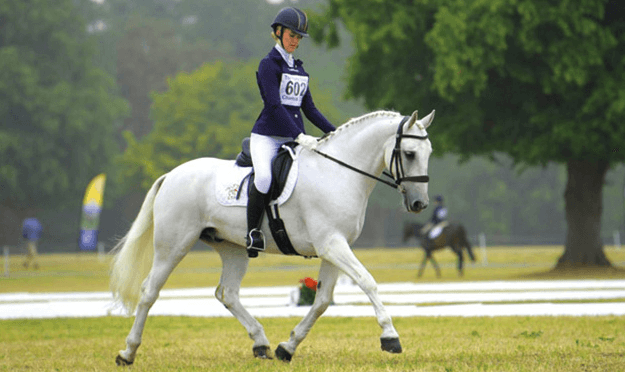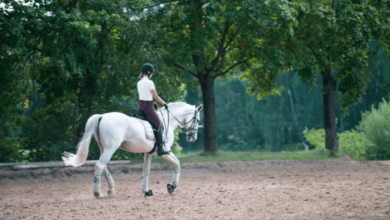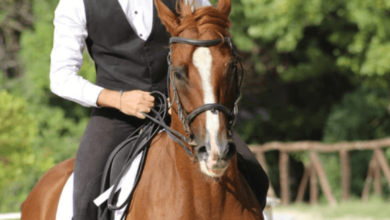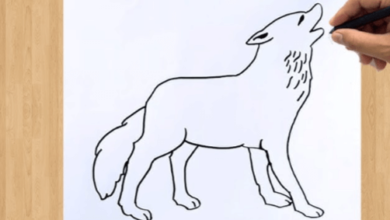What are the different levels of dressage competition?

Introduction
Dressage, often described as ballet on horseback, is a sport that combines precision, grace, and harmony between horse and rider. As an Olympic discipline, dressage competitions are structured to progressively challenge both the horse and rider’s abilities. This article delves into the different levels of dressage competition, providing a comprehensive guide for equestrians at all stages of their journey.
What is Dressage?
Dressage, derived from the French term meaning “training,” involves a series of prescribed movements known as “tests” that are performed by the horse and rider in a rectangular arena. The primary goal is to demonstrate the horse’s training and the rider’s ability to communicate effectively with the horse, showcasing their partnership, harmony, and precision.
History of Dressage
Dressage has roots that trace back to ancient Greece, where Xenophon, a Greek historian, wrote about horse training techniques. The modern form of dressage was significantly influenced by the cavalry training methods of the Renaissance period, particularly in Italy and France. Today, it is a highly respected equestrian sport, governed internationally by the Fédération Équestre Internationale (FEI).
The Importance of Dressage Levels
The structure of dressage competition levels allows for a clear progression of skills and techniques for both horse and rider. Each level builds upon the previous one, ensuring that foundational skills are mastered before advancing to more complex movements. This progression is crucial for the development of both the horse’s physical abilities and the rider’s competence.
Introductory Levels
The introductory levels, often referred to as Walk-Trot tests, are designed for beginners. These tests focus on the basic paces of the horse, primarily walk and trot, without the need for canter work. They are ideal for new riders or young horses, emphasizing relaxation, rhythm, and simple transitions.
Training Level is the next step, introducing the canter and more complex transitions. It emphasizes the development of the horse’s balance, suppleness, and willingness to move forward. Riders begin to perform 20-meter circles and changes of rein, laying the groundwork for more advanced movements.
First Level
At First Level, the complexity increases with the introduction of lengthened strides in trot and canter. Riders also perform leg-yielding, a lateral movement that demonstrates the horse’s responsiveness to the rider’s aids. This level requires a greater degree of balance and strength from both horse and rider.
Second Level
Second Level introduces more collected movements and lateral work, such as shoulder-in and travers. Collection refers to the horse carrying more weight on its hindquarters, which is essential for advanced dressage. Medium paces in trot and canter, as well as simple changes of lead, are also part of this level.
Third Level
Third Level tests the horse’s ability to perform extended paces, half-pass at trot and canter, and flying changes of lead every stride. This level requires significant collection and engagement from the horse, as well as precise aids from the rider.
Fourth Level
Fourth Level includes movements such as tempi changes every three strides, pirouettes at the walk and canter, and advanced lateral work. Horses and riders must demonstrate a high degree of athleticism and communication.
FEI Levels
Prix St. Georges marks the beginning of the FEI levels, which are governed by international rules. This level introduces more complex movements like canter pirouettes and four-tempi changes. It tests the horse’s ability to maintain collection and precision in more demanding exercises.
Intermediate I
Intermediate I builds on Prix St. Georges with movements such as three-tempi changes and more difficult pirouettes. It prepares horses and riders for the highest levels of competition.
Intermediate II
Intermediate II is a bridge to the Grand Prix level. It includes advanced movements like two-tempi changes and even more collected work. This level tests the horse’s strength, balance, and responsiveness.
Grand Prix
Grand Prix is the pinnacle of dressage competition, featuring the most challenging movements such as piaffe, passage, and one-tempi changes. Riders must perform these movements with precision and harmony, demonstrating the highest level of training.
Grand Prix Special
The Grand Prix Special is a variation of the Grand Prix test, with a different set of movements. It is often used in championships and requires a high degree of skill and preparation.
Grand Prix Freestyle
Grand Prix Freestyle allows riders to create their own choreography to music. This test highlights the artistic side of dressage, showcasing the horse’s abilities and the rider’s creativity. It is a crowd favorite due to its expressive and unique performances.
Young Horse Levels
Young horse levels are designed for horses aged four to seven years old. These levels focus on evaluating the horse’s potential and basic training. They emphasize natural paces, willingness to work, and overall development.
Para Dressage
Para dressage is designed for riders with physical disabilities. It follows the same principles as standard dressage but is adapted to meet the needs of the riders. Competitions are categorized based on the riders’ functional abilities, ensuring a fair and supportive environment.
Freestyle Competitions
Freestyle competitions at various levels allow riders to perform to music, showcasing their creativity and the horse’s rhythm and harmony. These events are particularly popular with spectators and provide a unique way for riders to demonstrate their skills.
Dressage Tests and Movements
Dressage tests at each level consist of specific movements, such as circles, transitions, and lateral work. These tests are designed to progressively challenge the horse and rider, building on skills learned at previous levels.
Scoring in Dressage Competitions
Scoring in dressage is based on a scale of 0 to 10 for each movement, with 10 being the highest score. Judges evaluate the accuracy, rhythm, and overall execution of each movement. Collective marks are also given for gaits, impulsion, submission, and the rider’s position and aids.
Preparing for Competitions
Preparation for dressage competitions involves consistent training, mental focus, and proper care of the horse. Riders should familiarize themselves with the test requirements, practice regularly, and ensure their horse is in peak physical condition.
Training Tips for Different Levels
Training tips vary based on the level, but common advice includes maintaining a regular training schedule, focusing on basics before advancing, and working with a knowledgeable trainer. Building a strong foundation at each level is crucial for long-term success.
Choosing the Right Horse for Dressage
Choosing the right horse involves considering factors such as temperament, conformation, and movement. Horses with natural balance, rhythm, and willingness to work are ideal for dressage. It’s important to match the horse’s abilities with the rider’s goals.
Common Challenges in Dressage Training
Common challenges include maintaining consistency, dealing with resistance or tension in the horse, and mastering advanced movements. Patience, perseverance, and a positive approach are key to overcoming these obstacles.
Role of the Trainer
A skilled trainer provides guidance, support, and expertise in dressage training. They help riders develop their skills, address challenges, and prepare for competitions. Finding a compatible and knowledgeable trainer is essential for progress.
Equipment and Attire for Dressage
Proper equipment and attire are important in dressage. This includes a well-fitted saddle, bridle, and protective gear for the horse, as well as appropriate attire for the rider, such as breeches, boots, and a helmet. The right equipment ensures safety, comfort, and effective communication.
International Dressage Competitions
International dressage competitions, governed by the FEI, attract top riders from around the world. These events include prestigious competitions like the World Equestrian Games, the Dressage World Cup, and the Olympic Games. Competing internationally requires a high level of skill and dedication.
Future of Dressage
The future of dressage looks promising, with increasing interest and participation globally. Advances in training techniques, technology, and equine care continue to enhance the sport. As dressage evolves, it maintains its emphasis on the partnership between horse and rider.
FAQs
What are the different levels of dressage competition? The levels of dressage competition range from introductory levels like Walk-Trot and Training Level to advanced levels such as Prix St. Georges, Intermediate I and II, and Grand Prix. Each level progressively increases in complexity, testing the horse and rider’s abilities.
How do you advance through dressage levels? Advancing through dressage levels involves consistent training, mastering the required movements at each level, and successfully competing in tests. Riders must demonstrate proficiency and readiness to move up to more challenging levels.
What is the most advanced level of dressage? The most advanced level of dressage is the Grand Prix, which includes the most challenging movements like piaffe, passage, and one-tempi changes. This level requires exceptional skill and precision.
What are freestyle dressage competitions? Freestyle dressage competitions allow riders to create their own routines set to music. These performances highlight the horse’s rhythm, harmony, and the rider’s creativity. Freestyle competitions are available at various levels, including Grand Prix Freestyle.
What is the role of a trainer in dressage? A trainer provides essential guidance, support, and expertise in dressage training. They help riders develop their skills, prepare for competitions, and address challenges in training. A good trainer is crucial for progressing through the levels of dressage.
What equipment is needed for dressage? Dressage requires specific equipment for both horse and rider, including a well-fitted saddle, bridle, and protective gear for the horse, as well as appropriate attire for the rider such as breeches, boots, and a helmet. Proper equipment ensures safety, comfort, and effective communication.
Conclusion
Dressage is a beautifully intricate sport that demands dedication, precision, and harmony between horse and rider. Understanding the different levels of dressage competition is essential for anyone looking to progress in this discipline. Each level offers unique challenges and rewards, building a foundation for achieving excellence in the sport. Whether you’re a beginner or an advanced competitor, dressage provides a lifelong journey of learning and growth.







